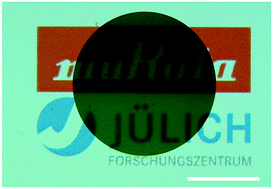Heavily donor-doped, optically translucent ferroelectric barium titanate ceramics through defect chemical engineering
Abstract
The possibility of preparing translucent ferroelectric heavily donor-doped BaTiO3 ceramics rich in TiO2 has been demonstrated by conventional ceramic processing based on the synthesis via the solid state route and on subsequent sintering and annealing at high levels of oxygen partial pressure. The resulting ceramics have very high densities and a very fine-grained microstructure with a remarkably narrow grain size distribution. Under oxidizing conditions large amounts of donor – in this case La – can be incorporated into the perovskite lattice during sintering, as the variation of the lattice parameters determined by combined XRD (X-ray diffraction) and Rietveld refinements suggests. The electrons released from these donors are captured most probably by vacancies of titanium, which act as acceptors. The optical properties are largely determined by defect chemistry and in particular by the concentration of free conducting electrons. Particularly the reduction of the free electron concentration is believed to be mainly responsible for the high degree of optical translucency. The normalized values of transmittance almost reach the best values reported so far for nanocrystalline barium titanate powders that have been consolidated via pressure-assisted sintering. Measurements of the refractive indices showed that they can be modified by the state of polarization of the ferroelectric BaTiO3-based ceramics. This newly developed material possibly opens a door to novel electro-optical applications.



 Please wait while we load your content...
Please wait while we load your content...